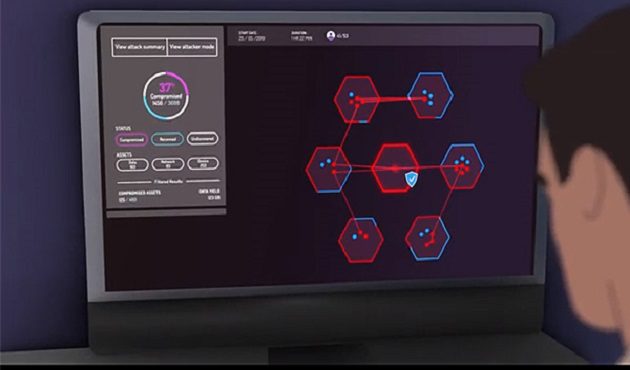It’s hardly news to point out that maintaining a strong security posture has never been tougher. Yet how high, truly, are the stakes? Consider this:
- The average data breach costs organizations roughly $4 million, according to the Ponemon Institute — and could theoretically cost much more
- Nearly 400,000 new bits of malware are identified daily. Keeping tabs on such an enormous volume is a daunting task.
- Only one-third of today’s enterprises feel prepared to defend a sophisticated cyber attack
- The growing complexity and adoption of cloud computing — and increased telecommuting as a result of COVID-19 — has greatly expanded the attack surface and created tough new shadow IT risks.
Given those factors, it’s safe to say that the challenge of maintaining security has never been greater. So what’s the best way to manage risk and meet these challenges head-on? For many organizations, integrating a cyber-attack simulator into its security posture is one of the most impactful steps that can be taken.
Why Simulating Cyber Attacks is Key
Reactive security — scanning and patching — has been widely practiced for decades. Today’s environment requires more, however. It’s not enough to scan for vulnerabilities and conduct episodic penetration testing. You need full visibility across the entire spectrum of security environments, and it has to be continuous in nature. Anything less and you are accepting more risk than you need to.
So how can organizations be more active in terms of identifying threats and weaknesses and addressing them? Cyber-attack simulation is one answer. Breach and Attack Simulation (BAS) platforms can help organizations achieve deep and sustained visibility and persistent protection against Advanced Persistent Threats (APTs). It works like this: BAS technology launches simulated APT cyber-attacks along the most common cyber-attack vectors. In other words, it simulates highly sophisticated attacks along the paths those attacks are most likely to occur.
Why is this important? Because it allows organizations to play offense by playing defense. Instead of waiting for the worst to happen and hoping your defenses are robust enough to deter any attack, simulating cyber-attacks allows you to test those defenses under real-world conditions. This gives you full and persistent visibility into any vulnerabilities that may arise. If any vulnerabilities arise, BAS software will provide guided remediation.
OK, you’re probably asking — can’t I rely on scanners and manual pen tests to do the same thing? No, and here’s why: Scanners lack critical context and manual testing is episodic. While both have their place, neither can offer continuous automated protection nor show you how vulnerabilities are likely to be exploited.
So now that we’ve covered why you need a cyber-attack simulation tool, let’s talk about how to choose the right one.
What to Consider When Evaluating Cyber Attack Simulation Software
While all BAS platforms can help you take a more active approach to cybersecurity, they are not all created equal in terms of what they offer. When you are considering investing in this technology, here are a few things to look for:
- Can it simulate attacks in multiple environments (cloud, multi-cloud, hybrid etc.)? If not, you won’t have full protection across the spectrum.
- Can it simulate APTs and protect “crown jewel” assets?
- Does it work safely with no disruption to production?
- Can it identify a multiplicity of attack vectors?
- Does it offer prioritized remediation?
The Takeaway
If you’re curious, XM Cyber’s BAS technology answers all of the above questions with a resounding “yes!” Our platform was the first to offer coverage in Amazon Web Services (AWS) and remains the most advanced cyber attack tool on the market. For more information, please visit this link.
Marcus Gilban is Head of Marketing Communications at XM Cyber
Related Topics



